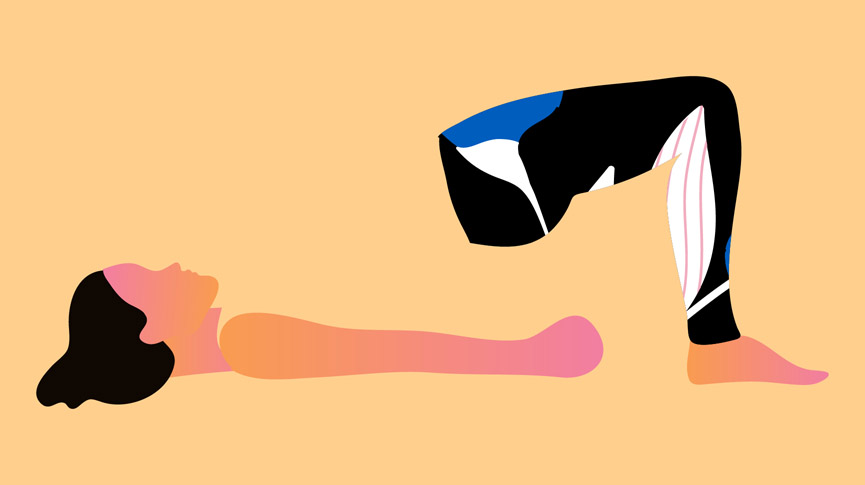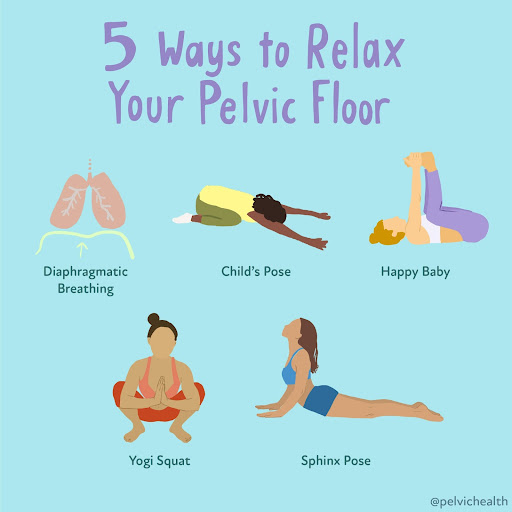
Your Guide to Kegel and Other Pelvic Floor Exercises
The pelvic floor is a group of muscles and tissues that form a hammock-like structure at the base of the pelvis. These muscles support the bladder, uterus, and rectum and play a critical role in bowel and bladder control, sexual function, and childbirth. However, the pelvic floor can become weakened or damaged due to pregnancy, childbirth, aging, and certain medical conditions, leading to a range of issues such as incontinence, pelvic pain, and pelvic organ prolapse. Pelvic floor exercises, also known as Kegels, are a type of exercise that can help strengthen these muscles and improve their function. In this essay, we will explore exercises for the pelvic floor and their benefits.

BENEFITS OF PELVIC FLOOR EXERCISES
Pelvic floor exercises offer numerous benefits for both men and women. One of the primary benefits of pelvic floor exercises is improved bladder and bowel control. Weak pelvic floor muscles can lead to incontinence, which is the involuntary loss of urine or feces. Studies have shown that regular pelvic floor exercises can significantly reduce the frequency and severity of incontinence, improving quality of life and reducing embarrassment and discomfort.
In addition to improving bladder and bowel control, pelvic floor exercises can also enhance sexual function. The pelvic floor muscles play a critical role in sexual arousal and orgasm, and weak muscles can lead to difficulties with arousal or orgasm. Regular pelvic floor exercises can help individuals achieve stronger and longer-lasting orgasms, enhancing sexual pleasure and satisfaction.
Another benefit of pelvic floor exercises is a reduced risk of pelvic organ prolapse. Pelvic organ prolapse is a condition in which the pelvic organs, such as the bladder or uterus, descend into the vaginal canal due to weak pelvic floor muscles. This can cause discomfort, pain, and incontinence. Regular pelvic floor exercises can help prevent pelvic organ prolapse and other pelvic floor disorders by strengthening the muscles that support the organs

EXERCISES FOR PELVIC FLOOR : WHICH & HOW?
Performing pelvic floor exercises is relatively simple. The most common exercise is called a Kegel, which involves contracting and relaxing the muscles in the pelvic floor. To perform a Kegel, individuals should first locate the pelvic floor muscles by trying to stop the flow of urine midstream. Once you have identified these muscles, you can begin to perform the exercises.
To perform a pelvic floor exercise, squeeze the muscles in your pelvic floor and hold for five seconds. Then, release the muscles and rest for five seconds. Repeat this exercise ten times, three times a day. As you become more comfortable with the exercises, you can gradually increase the duration of the contractions and the number of repetitions.
It is important to note that proper form is essential for getting the most out of your pelvic floor exercises. When performing the exercises, make sure you are not holding your breath, squeezing your buttocks, or tightening your stomach muscles. Focus on contracting the muscles in your pelvic floor only.
In addition, it is important to avoid overexertion. Overdoing pelvic floor exercises can lead to muscle fatigue and discomfort. If you experience pain or discomfort during the exercises, take a break and try again later.
There are several other exercises and techniques that can help strengthen the pelvic floor, such as squats, bridges, and pelvic floor physical therapy.
- Squats : To perform a squat, individuals should stand with their feet shoulder-width apart and lower themselves into a sitting position, as if they were sitting in a chair. As they lower themselves down, they should squeeze their buttocks and pelvic floor muscles. This exercise should be repeated 10-15 times in a row, 3-4 times per day.
- Bridges : To perform a bridge, individuals should lie on their back with their knees bent and feet flat on the ground. They should then lift their hips off the ground, squeezing their buttocks and pelvic floor muscles as they do so. This exercise should be held for 5-10 seconds, then lowered back down to the ground. It should be repeated 10-15 times in a row, 3-4 times per day.
- Pelvic floor physical therapy : is an option for individuals who are experiencing pelvic floor dysfunction. This type of therapy involves working with a physical therapist who specializes in pelvic floor muscles to develop an individualized treatment plan that includes exercises, biofeedback, and other techniques to improve pelvic floor function.

CONCLUSION
In conclusion, pelvic floor exercises are a simple and effective way to improve the strength and function of the muscles in the pelvic floor. They offer numerous benefits, including improved bladder and bowel control, enhanced sexual function, and reduced risk of pelvic organ prolapse. With regular practice, pelvic floor exercises can help individuals regain control over their bodily functions, enhanc their quality of life, and prevent embarrassing accidents and discomfort.
However, it is important to note that pelvic floor exercises may not be suitable for everyone. Individuals with certain medical conditions, such as pelvic pain or pelvic organ prolapse, should consult with their healthcare provider before starting any new exercise regimen. In addition, it is important to practice proper form and avoid overexertion to prevent muscle fatigue and discomfort.
Pelvic floor exercises can be done anywhere, anytime, without the need for any special equipment or tools. They are particularly beneficial for women who are pregnant, postpartum, or experiencing menopause, as these life stages can place significant strain on the pelvic floor muscles. Men can also benefit from pelvic floor exercises, as they can help improve urinary and fecal incontinence and erectile dysfunction.
In addition to pelvic floor exercises, there are other exercises and techniques that can help strengthen the pelvic floor, such as squats, bridges, and pelvic floor physical therapy. By incorporating these exercises into their daily routine, individuals can improve their pelvic floor strength and function and enhance their overall health and well-being.
Overall, pelvic floor exercises are a simple and effective way to improve bladder and bowel control, enhance sexual function, and reduce the risk of pelvic organ prolapse. With regular practice, individuals can enjoy the many benefits of pelvic floor exercises and lead a healthier, happier life. Remember to consult with your healthcare provider before starting any new exercise regimen and to practice proper form and technique to ensure optimal results.
Author


2 thoughts on “Your Guide to Kegel and Other Pelvic Floor Exercises”
Pingback: 10 Pro Tips for Effective Kegel Exercises – Health Secrets
Pingback: Your Information to Kegel and Different Pelvic Ground Workouts - Haps News